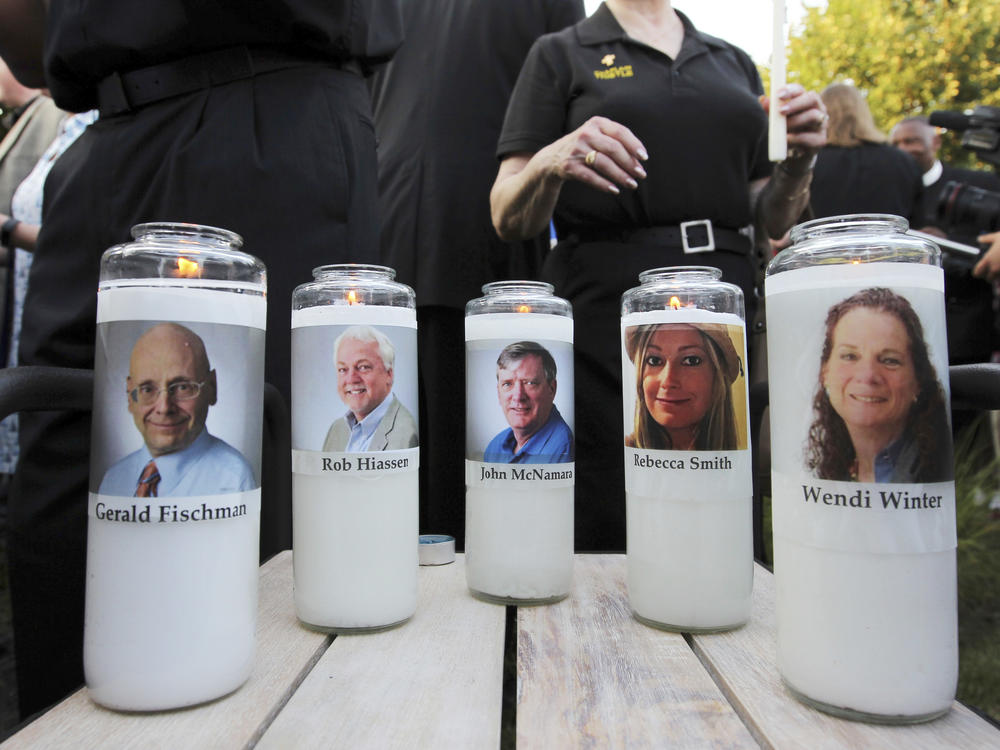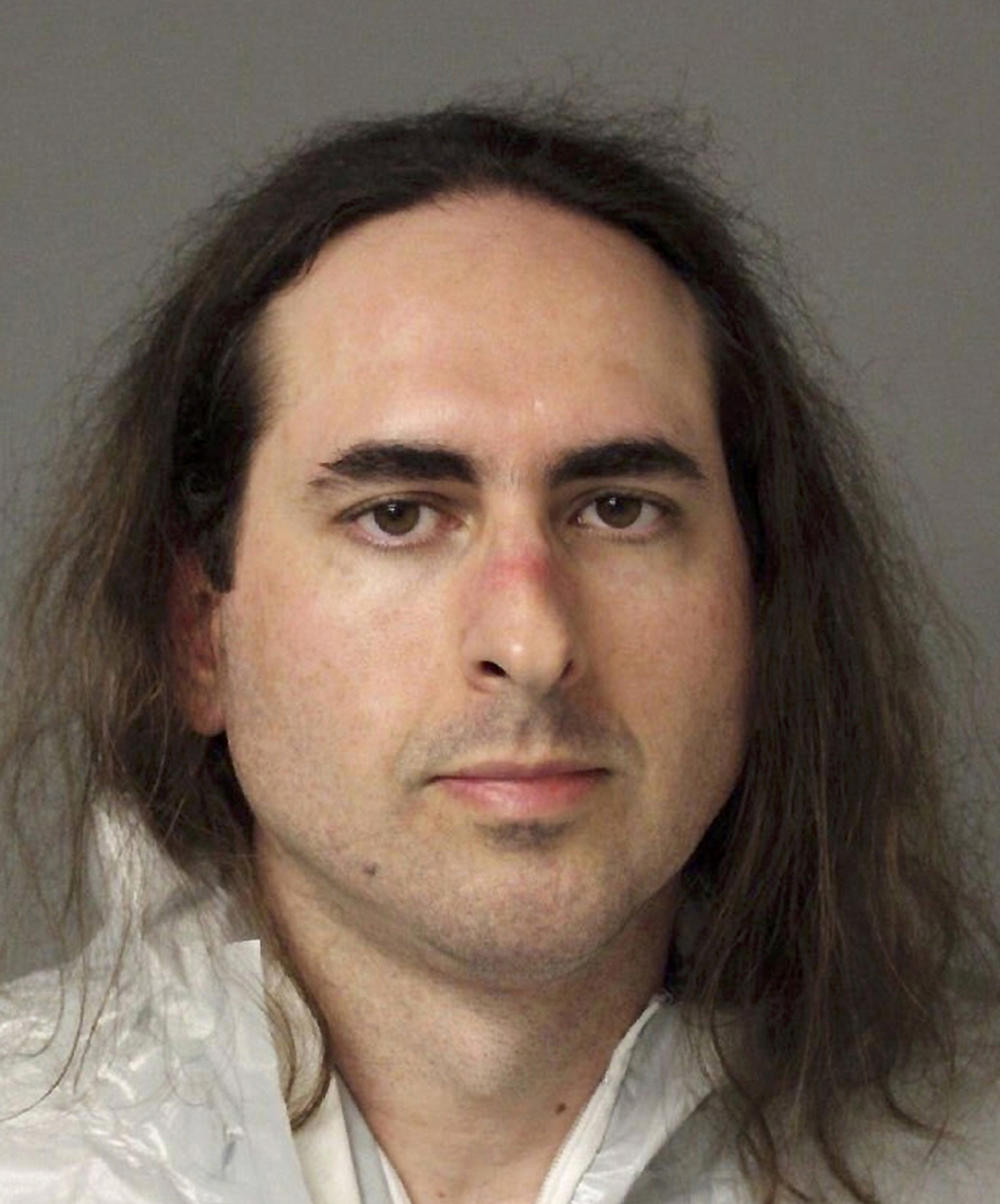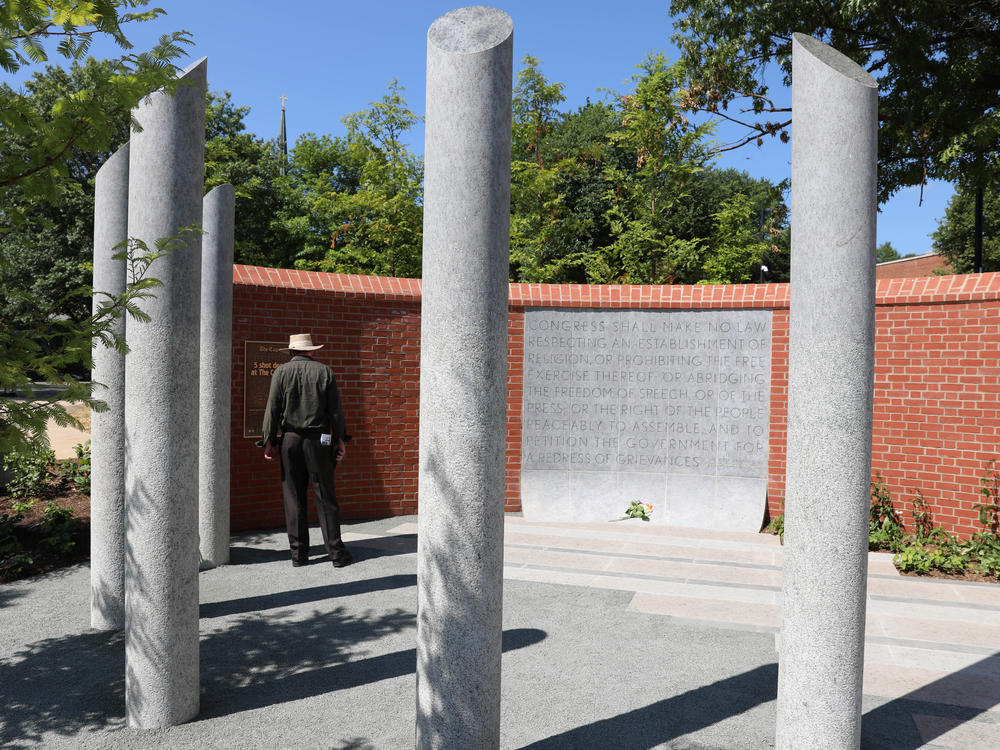Section Branding
Header Content
The 'Capital Gazette' Gunman's Trial Began Today. Here's What You Need To Know
Primary Content
Updated June 29, 2021 at 6:07 PM ET
Arguments in the trial of the Capital Gazette shooter began Tuesday — almost three years to the day since Jarrod Ramos opened fire in the newsroom of the Annapolis, Md., newspaper.
Five people died in the June 28, 2018, attack: John McNamara, Rob Hiaasen, Gerald Fischman, Wendi Winters and Rebecca Smith. The mass shooting was the deadliest attack on a newsroom in modern U.S. history.
Ramos, now 41, pleaded guilty in 2019 to all 23 counts against him in the attack, but his attorneys argue that he's not criminally responsible because of mental illness.
"Mr. Ramos is guilty, and he is also not criminally responsible," said his attorney, Katy O'Donnell, according to The Associated Press.
The trial has been delayed several times because of COVID-19, turnover in the public defender's and state's attorney's offices, and multiple court hearings.
Here's what to know as the trial gets underway:
What do we know about Ramos?
Ramos' attorney said Tuesday that Ramos has had mental health problems for at least eight years. In the years before the shooting, the defense said Ramos was fired from his job and became estranged from members of his family. He never had any meaningful relationships or romantic relationships with another person, the defense said.
When he tried to form a relationship with a high school acquaintance via Facebook she filed a stalking charge against him, the defense said.
A 2011 story in The Capital, part of the Capital Gazette newsroom, described it differently — as Ramos harassing a former high school classmate online for months on end, including trying to get her fired from her job.
Ramos filed a defamation suit against the paper in 2012 but a court dismissed it. He believed his reputation was tarnished and blamed the paper and the Maryland court system, Ramos' lawyer said.
Ramos held a grudge against the paper for years afterward.
According to details included in his indictment and news reports, the day of the shooting Ramos traveled from his Laurel, Md., home to the Annapolis newsroom. He had with him smoke grenades, a shotgun he'd purchased years before, and dozens of round of ammunition.
After the shooting, Ramos called 911 and told the dispatcher: "This is your shooter. The shooting is over. I surrender." When officers entered the building to search for him, Ramos was found hiding under a desk. He again said, "I surrender, I surrender" and identified himself as the shooter.
What is the focus of this trial?
The jury will have to decide in this trial whether Ramos was, in fact, so mentally ill at the time of the shooting, that he shouldn't be held legally responsible for it. Circuit Court Judge Judge Michael Wachs ultimately will decide whether Ramos should be sent to prison or a hospital.
The focus for both the defense and prosecution will be to show evidence of whether Ramos was mentally cognizant of what he was doing.
Doctors for the defense and prosecution say that Ramos has shown signs of multiple mental illnesses, including delusional disorder, which causes people to firmly believe things that aren't true.
Anne Arundel County State's Attorney Anne Colt Leitess deferred her opening statement until after the defense concludes its case.
Prosecutors are expected to make the case that Ramos' attack was planned and calculated beginning at least two years before.
In Maryland, a defendant is entitled to an insanity acquittal if they prove that, at the time of the crime, because of a mental disorder, they didn't understand fully what they were doing.
If that defense is successful, Ramos would be placed in a psychiatric institution for treatment and could be eligible for release in the future if it were determined he no longer posed a danger to the public.
What's happened since the shooting?
The day before the trial was set to begin and the third anniversary of the shooting, the city of Annapolis dedicated a memorial to the five victims.
The memorial, called the Guardians of the First Amendment, is made up of five
stone pillars to represent the five victims. The memorial plaque also honors the First Amendment.
Maryland Gov. Larry Hogan proclaimed June 28 as Freedom of the Press Day in Maryland.
In the immediate aftermath of the Gazette shooting, the members of the newsroom worked to cover the story of their colleagues' deaths and put out the next day's paper. For their efforts, they won a Pulitzer Prize.
Copyright 2021 NPR. To see more, visit https://www.npr.org.



